26 June to 21 July
In this edition, we lose our dinghy (due to a granny knot), snag some ancient fishing equipment, say goodbye to our spirited sailing buddy, Djell, and have 100’s of boats descend on us at anchor. But let’s start in the beginning…
We enter Vigo estuary after a hearty sail down the coast past Finisterre. Vigo is the most populated city and municipality in Galicia. It is one of the region’s primary economic agents and has the European Fisheries Control Agency headquartered here.
Seeing our anchorage getting closer brings hope for a peaceful evening. Sailing friends from Brighton who are a couple of weeks ahead of us advise us that one side of the Enseada da Barra anchorage is nudist. If you prefer not to be within eyes view, you need to move closer to the right-hand side of the extended beach. We opt for this option (not yet being a nudist sailing boat), though there is a bit more of a swell coming in from the Atlantic. The beach is beautiful, with even more white sand than before, and spider crabs below us. After a good night’s rest, we prepare to head over to the inviting beach before us.
Here I would have to add another logistical aspect of being a live-aboard cruiser, dealing with the removal of your rubbish. We tend to keep a sizeable black refuse bag in our dinghy while sailing and fill the said bag with any waste that is not organic. The organic goes overboard (not while in a marina, of course). After a couple of days, you would need to find a public rubbish bin to dispose of your full garbage bags. Our first trip to land includes this bag and a treasure hunt for the rubbish bins. On this occasion, we had two loads, as we could not empty our rubbish in Camarinhas and now have five people on board.
As we approach the shore, we notice that no other dinghies are going to shore on our chosen route. This should be a pre-warning but, a warning too late. At the very last moment, we notice that the waves are breaking on the shore and not just rolling to shore as we had imagined. These inconspicuous waves were enough to tilt our dinghy, so everything came off the dinghy, Sander, William, myself and trash floating about. Ava was the most steadfast, and managed to stay aboard. Luckily we have the children in Life vests on most occasions, as Will was taken under and then struggled to get himself up again due to the breaking waves. Imagine the mess…we had a couple of days worth of rubbish, backpacks, and beach gear floating in the water. It must have been a strange sight for the locals, wondering about the sanity of these parents.
Another rookie mistake was made on my behalf, as I did not pack any food. I assumed we would encounter a shop or restaurant of some sort and pay for our lunch by card. This part of the bay does not have a grocer or an ATM, and the quaint beach restaurant only accepts cash. We manage to scavenge some money from Ava and Will’s savings jars and have a sandwich. After a couple of hours on the beach, the wind changes, signalling us to move on to avoid a bumpy night at anchor.
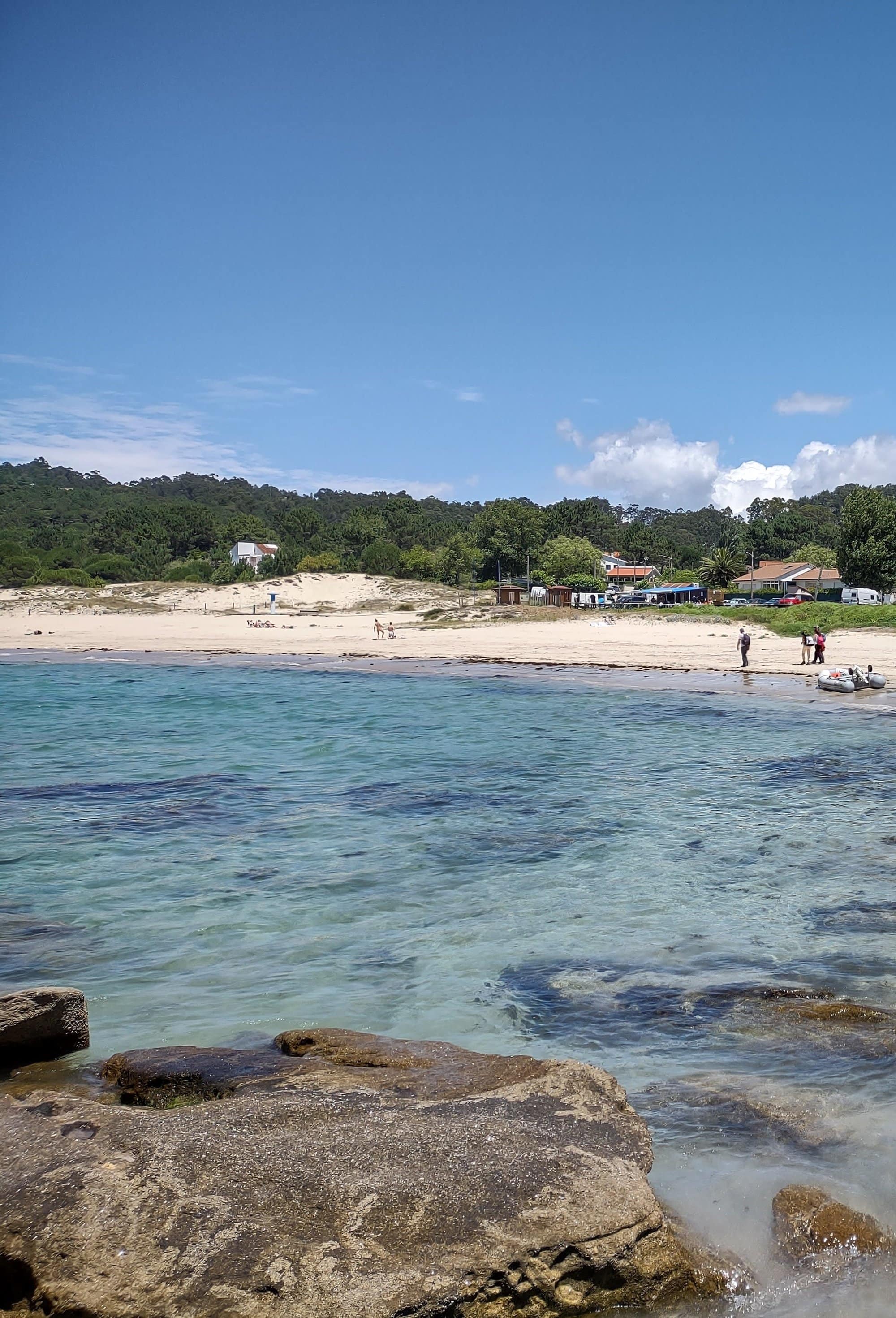
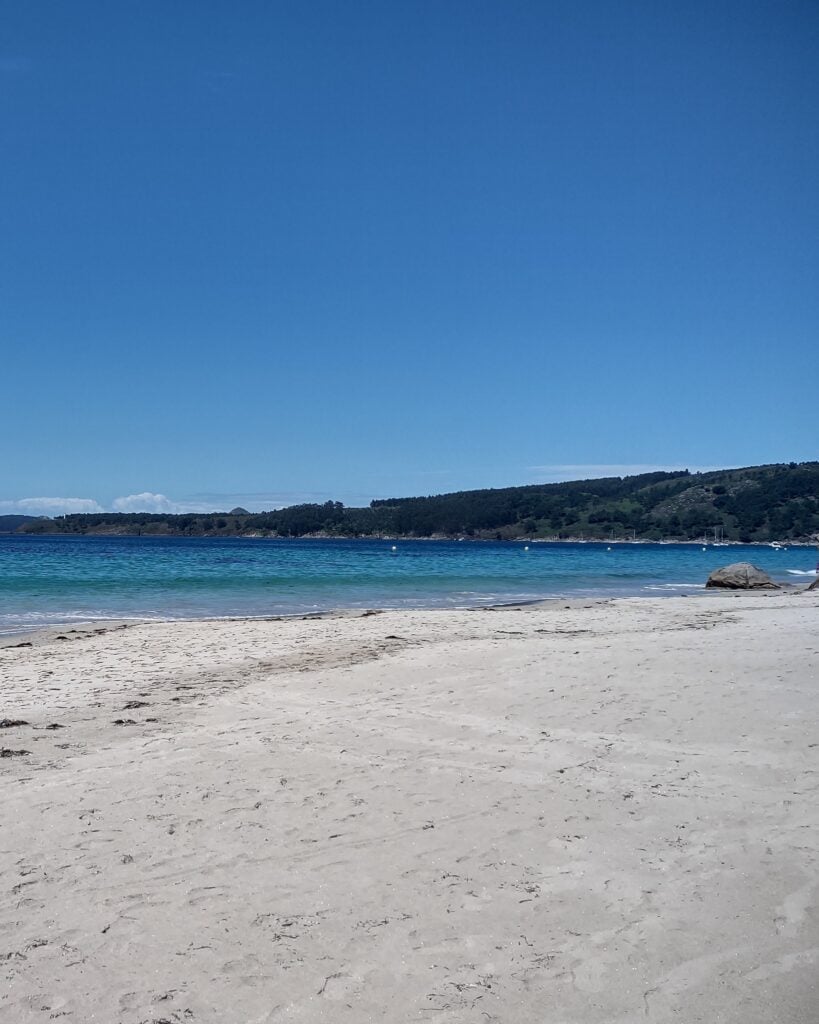
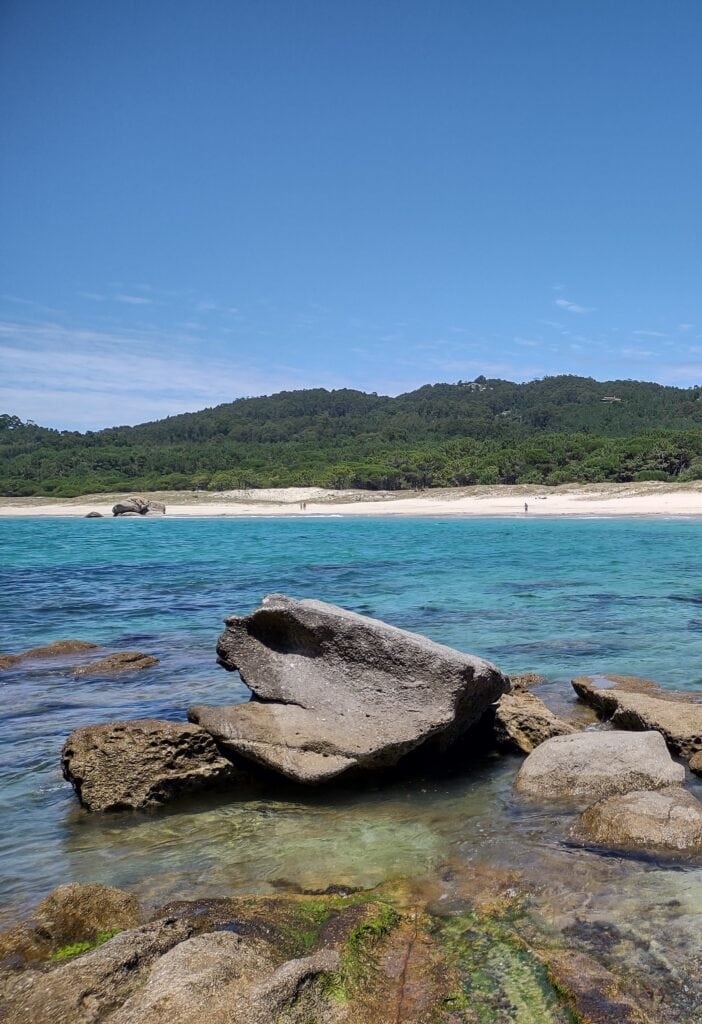
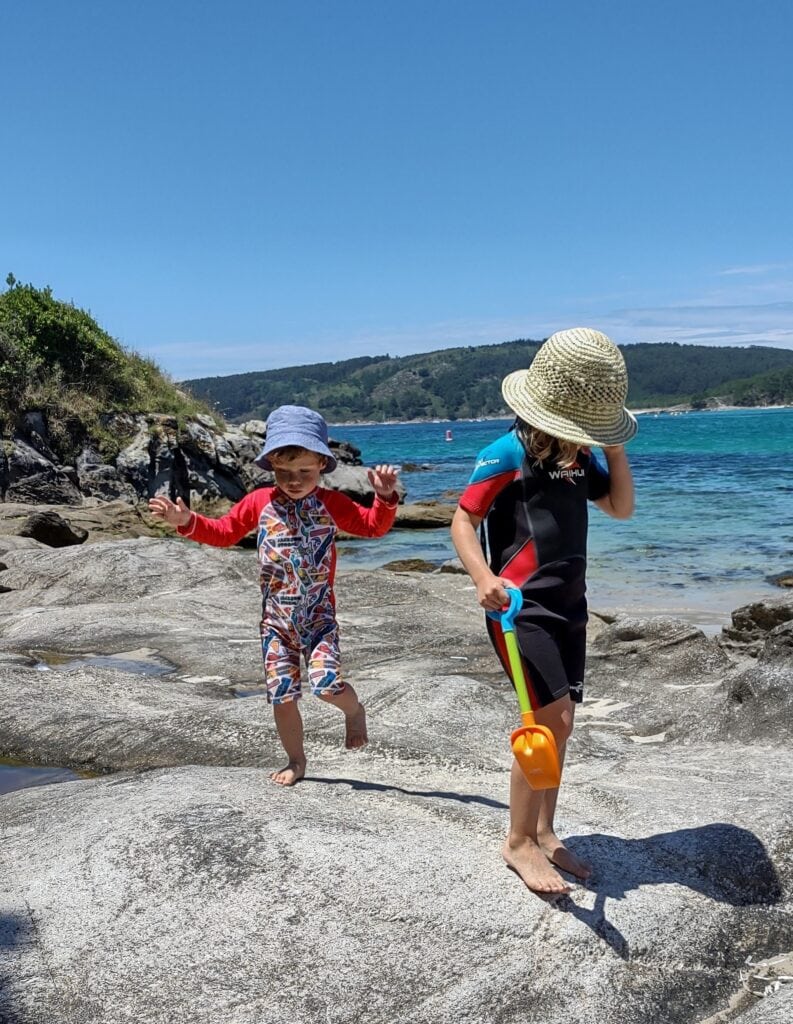
We anchor off in Cangas, two hours into the bay. Sander and Djell wander around town and return with stories of questionable-looking people and run-down buildings. They do, however, return with spectacular pizza, and a delightful evening of pizza and television watching ensue.
The following day we make our way to Moaña marina (another hour away…the estuary is enormous). Until now, we have been staying out at anchor as this is free versus the marina fees of between 20 – 80 euros a night. But by now, we are dirty; Susie Jane is a salty and sandy mess from all the sailing and beach adventures. It is time for some land comfort.
Moaña is picturesque. It is deep in the bay, with the village scattered along the mountain. A couple of colourful play parks, white sandy beaches, and little bars surround us.
It is customary here to be served tapas (free of charge) with your drink. Tapas range from mussels, omelettes, cheese, chorizo, chips, and candy for the kids. It becomes a game to see which of the bars provides the tastiest ones. During the day, you do not see many children; but by 5 pm, the town comes alive with the now rested children who had a Siesta during the afternoon. We follow this cultural characteristic and have Ava and Will have a nap from 4-7:30 pm, after which we head out for a 9 pm dinner.
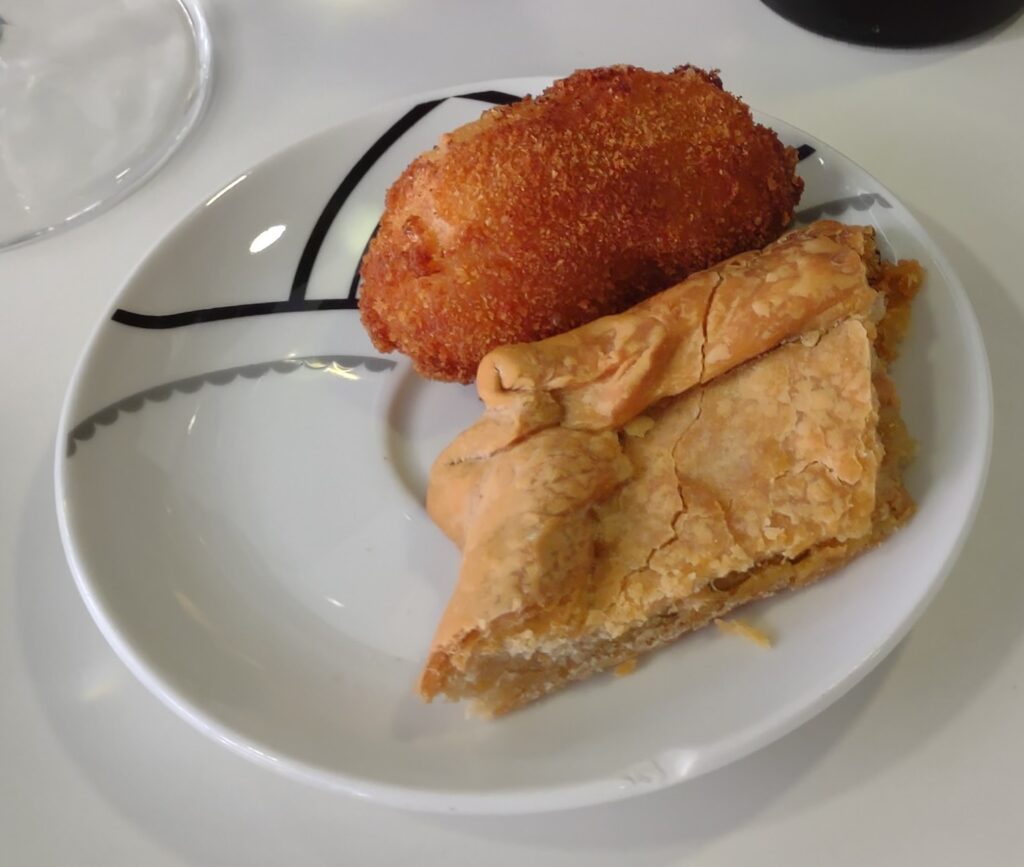
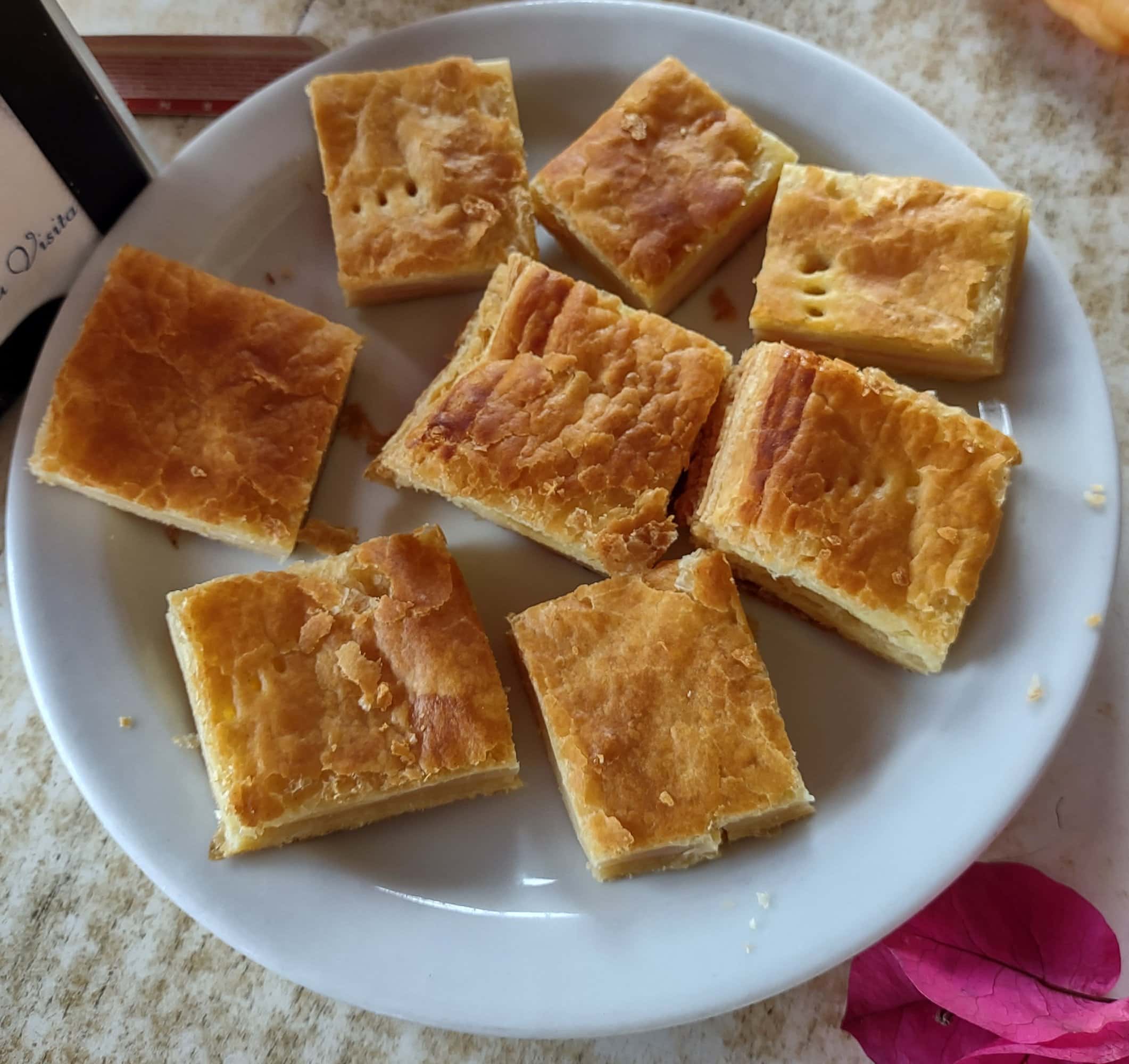

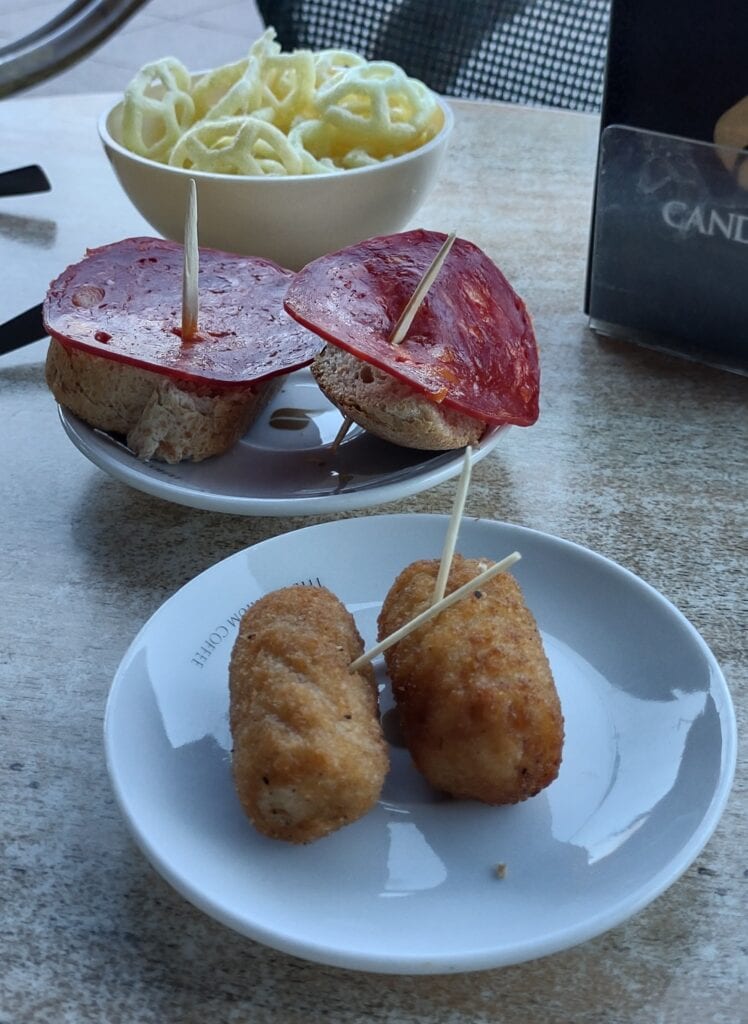
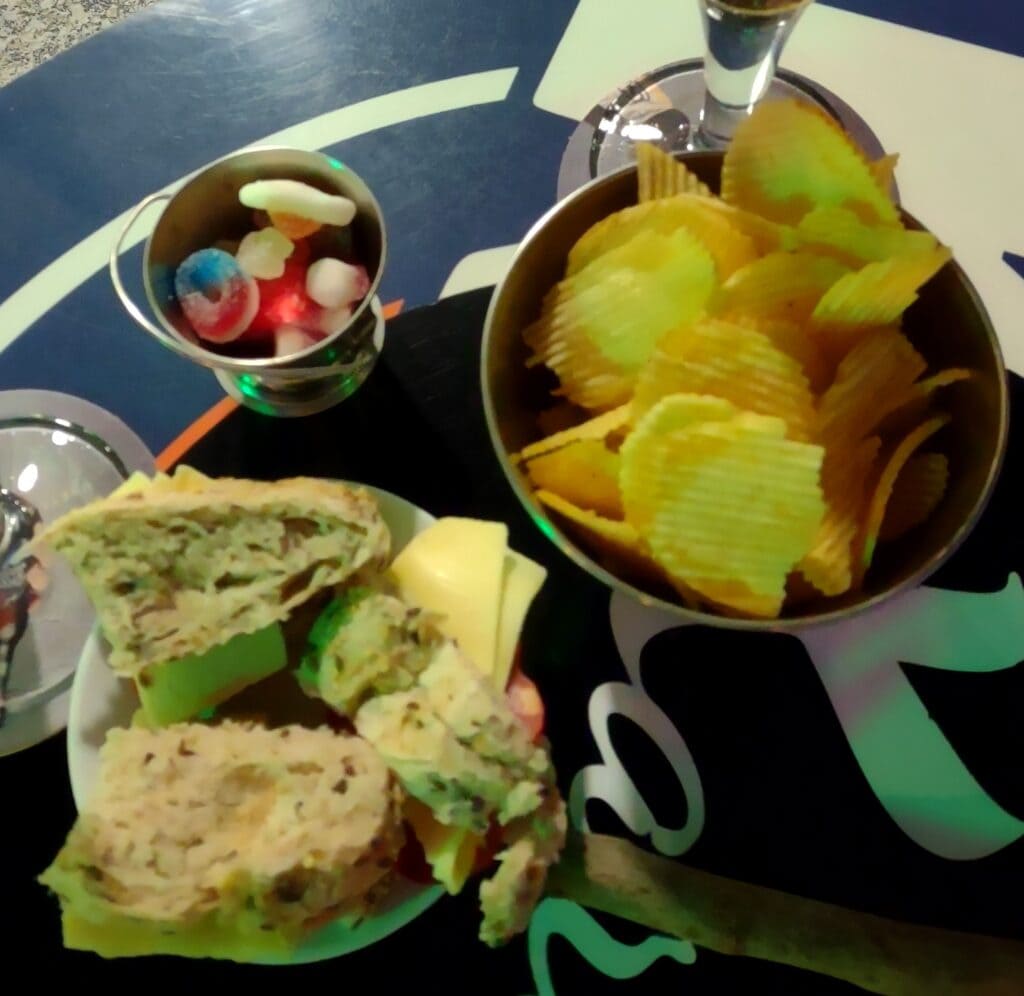
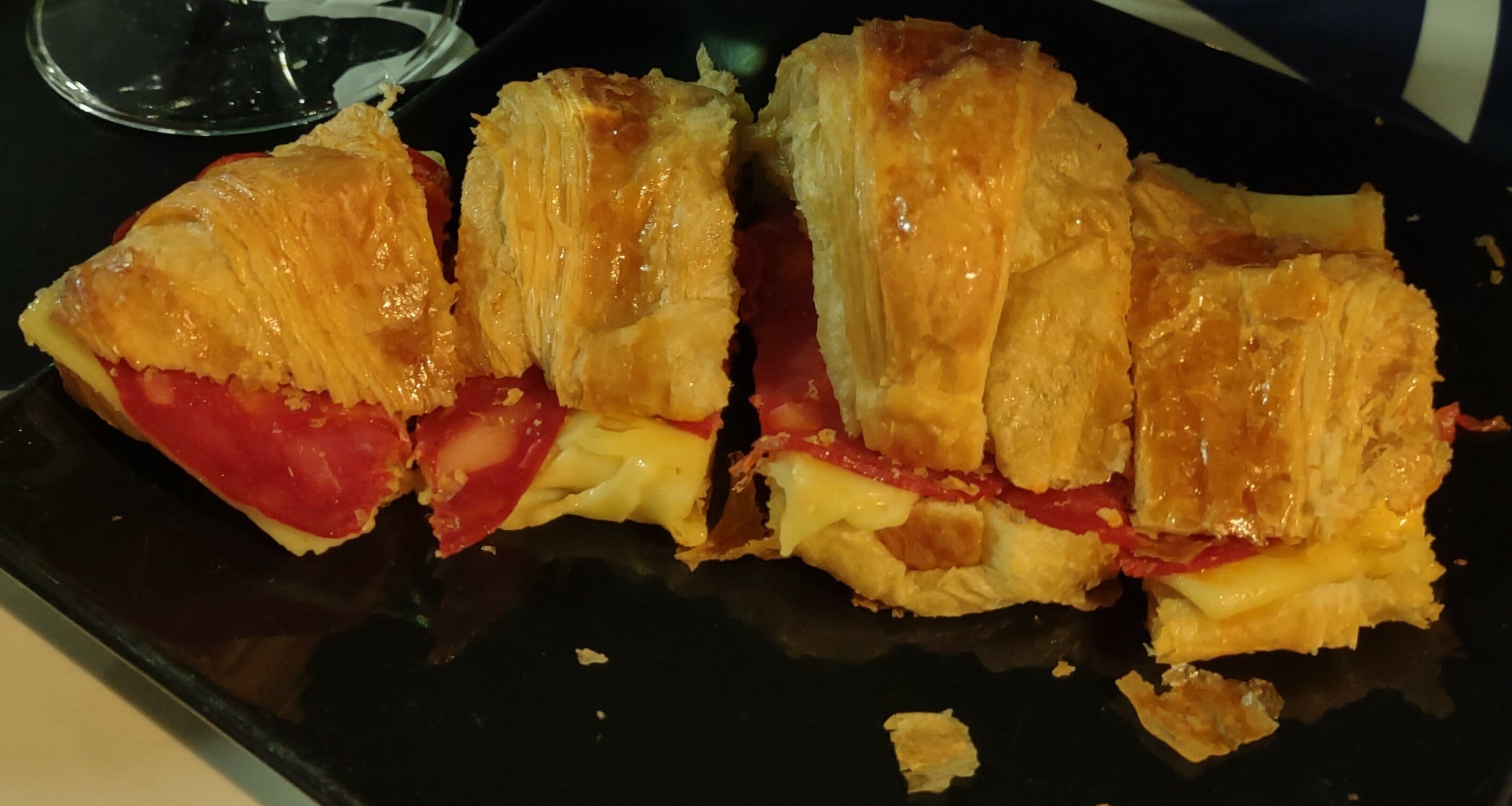
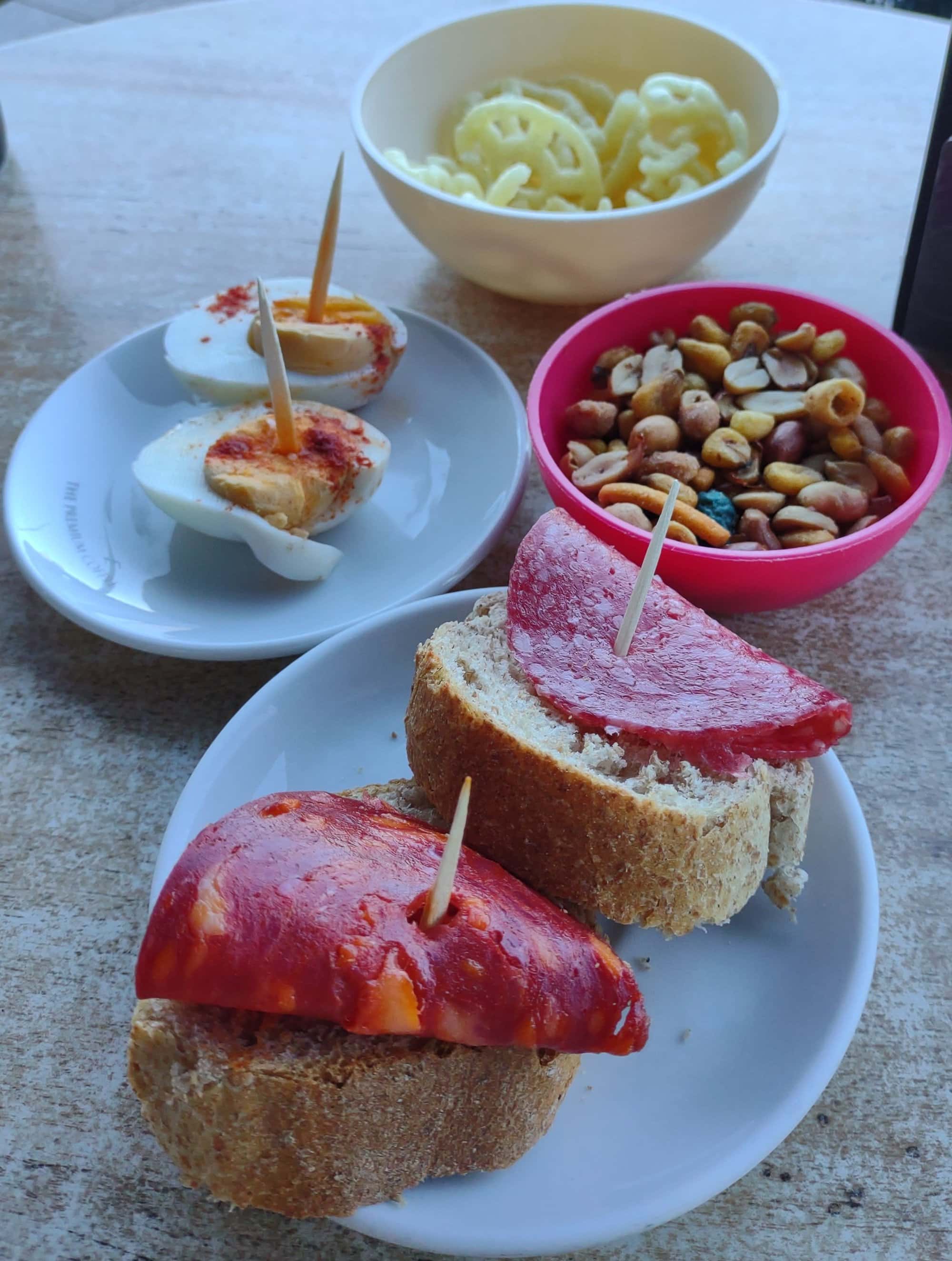
During one of the afternoon walks, Sander and Djell stumble upon a shack (this is a restaurant, but we refer to it as a shack due to how the kitchen looks) filled with locals and the smell of meat being prepared over an open fire. The place is filled with locals enjoying massive silver plates of a combination of ribs, fish, and pimentos. It is a buzzing hive of local activity with no tourists in sight (I assume we all hunt for these places on holiday). Things are set to their simplest form. There are plastic garden chairs and tables, wipe-down table clothes, and old promotional umbrellas to protect from the sun. The waitress makes a considerable effort to find their only English-translated menu. After a word with Anna, the owner, and cook, who smells like the fire she prepares the food above, we order and are presented with a marvellous feast. There is a huge salad, a large plate of chips, sardines, hake, calamari, fried pepper, beef and pork ribs, and pimentos, and it’s all divine and primarily prepared over an open fire. It amazes us how much good food comes from such a small kitchen. With all the restaurants featured on TripAdvisor for Moaña, there was no mention of our secret shack. For all the food and drinks we pay 80€ including the tip.
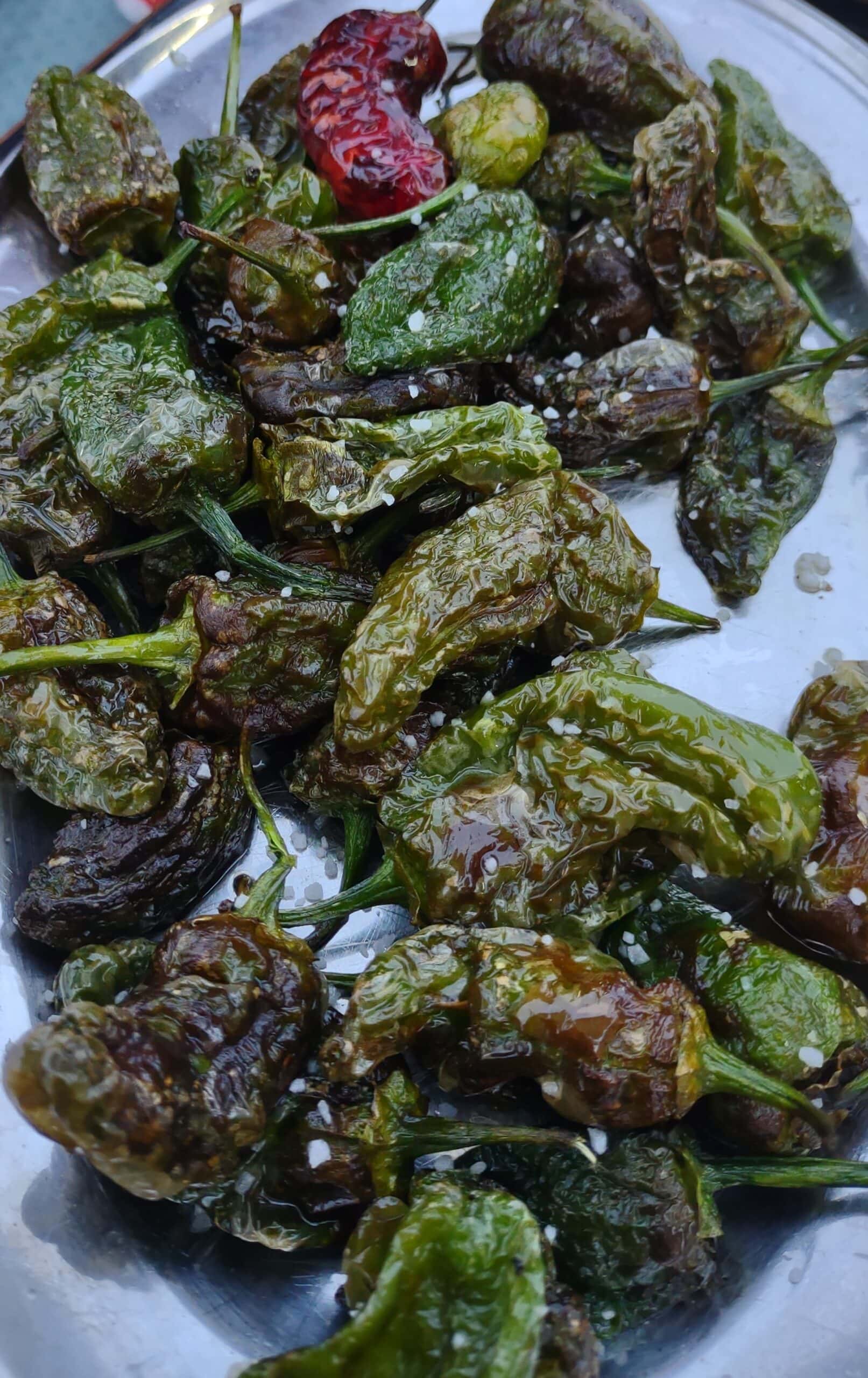
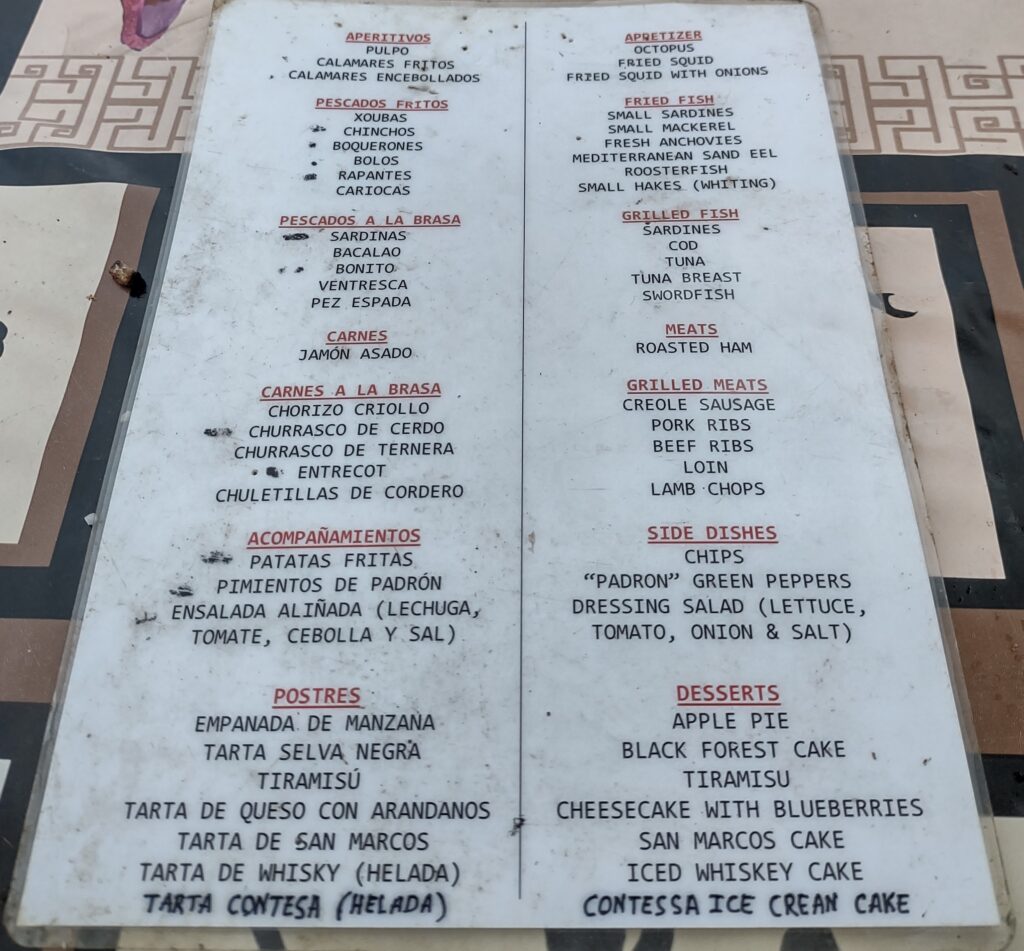
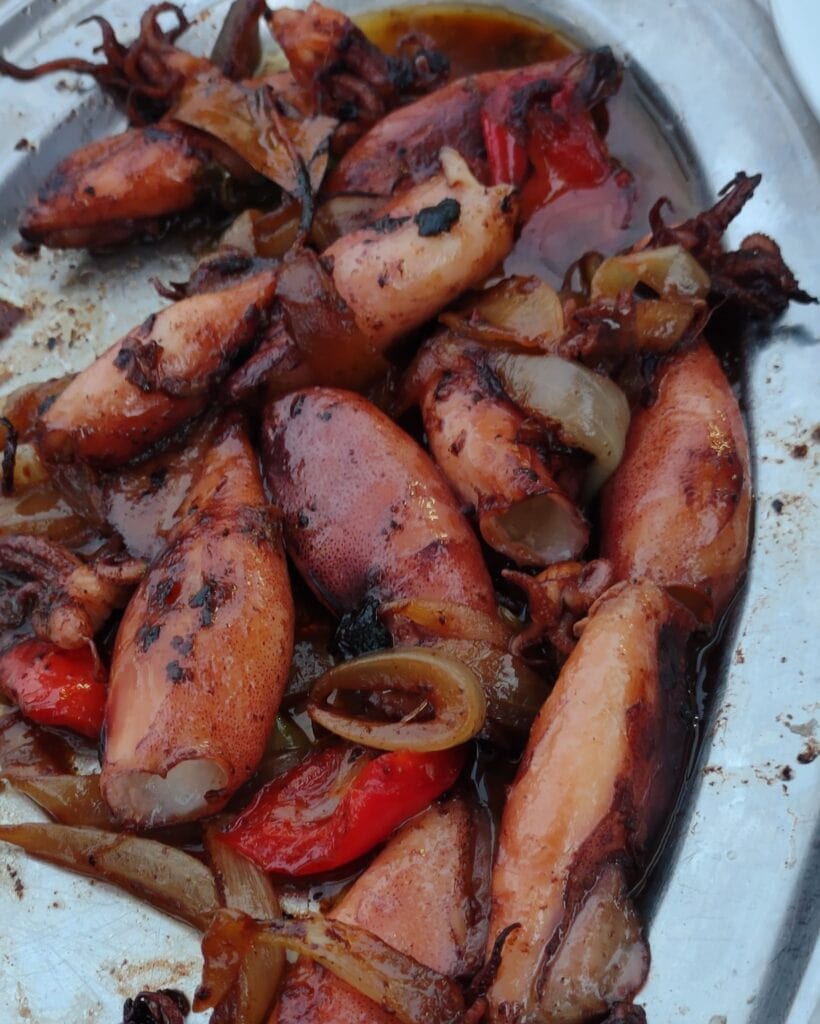
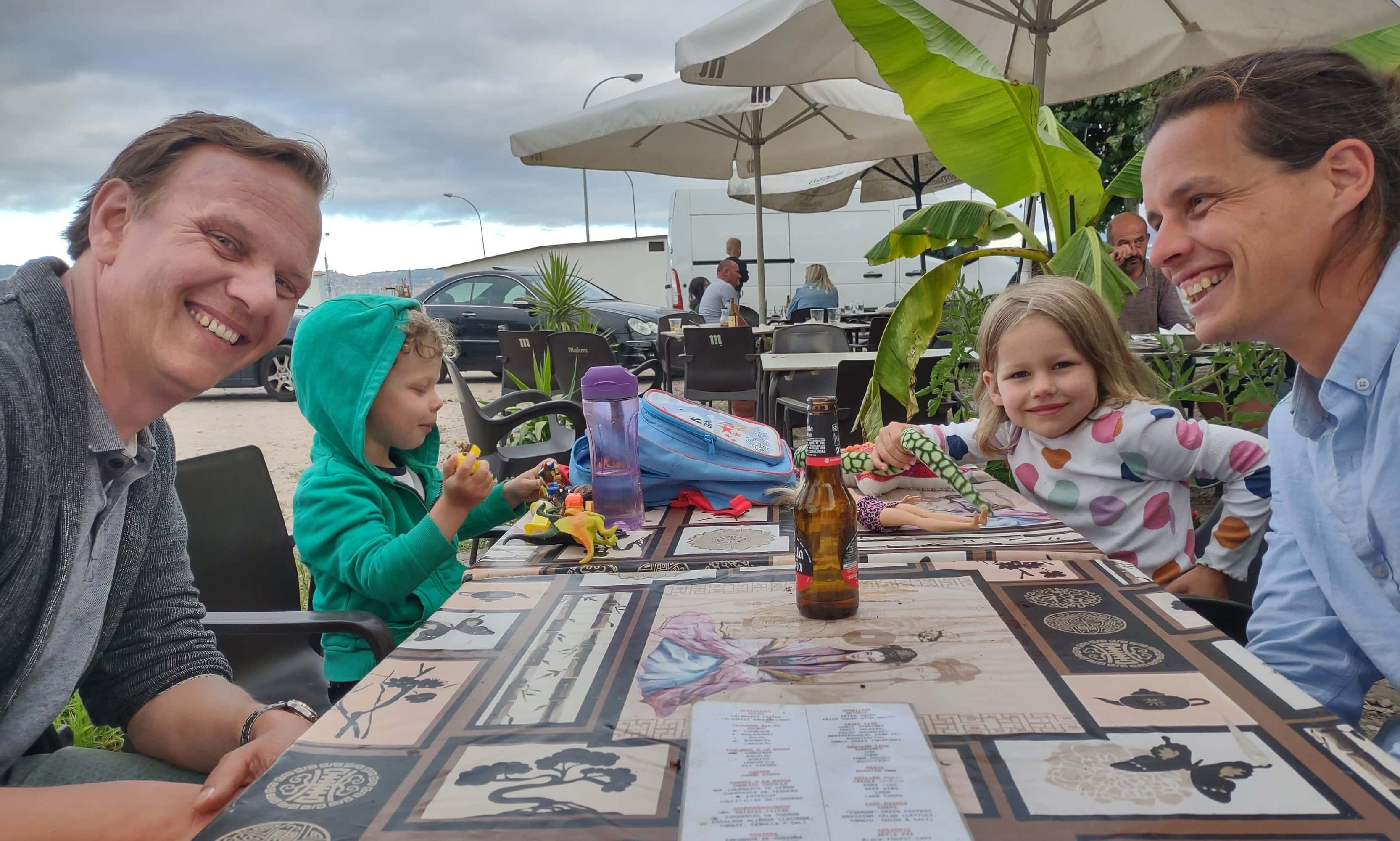
After a couple of days being in Moaña, the locals know your story, your name, and what you drink. We come across a couple of sailors who have decided to hang up their sailing gear for a couple of easy years in Moaña. Life is easy and slow here, and a good reminder of how easy things should be. We spend our time between being in the marina or anchoring off just off the marina. There is an Eroski supermarket close by with a fishmonger, butcher, and enough fruit and vegetables to keep us happy. There is a market on Wednesdays and Saturdays, where some local ladies sell vegetables, fruit, and flowers grown from their gardens. It is sunny, with a light breeze and the smell of fish cooking over fire most evenings. Moaña is the sort of place Sander and I would be able to retire in.
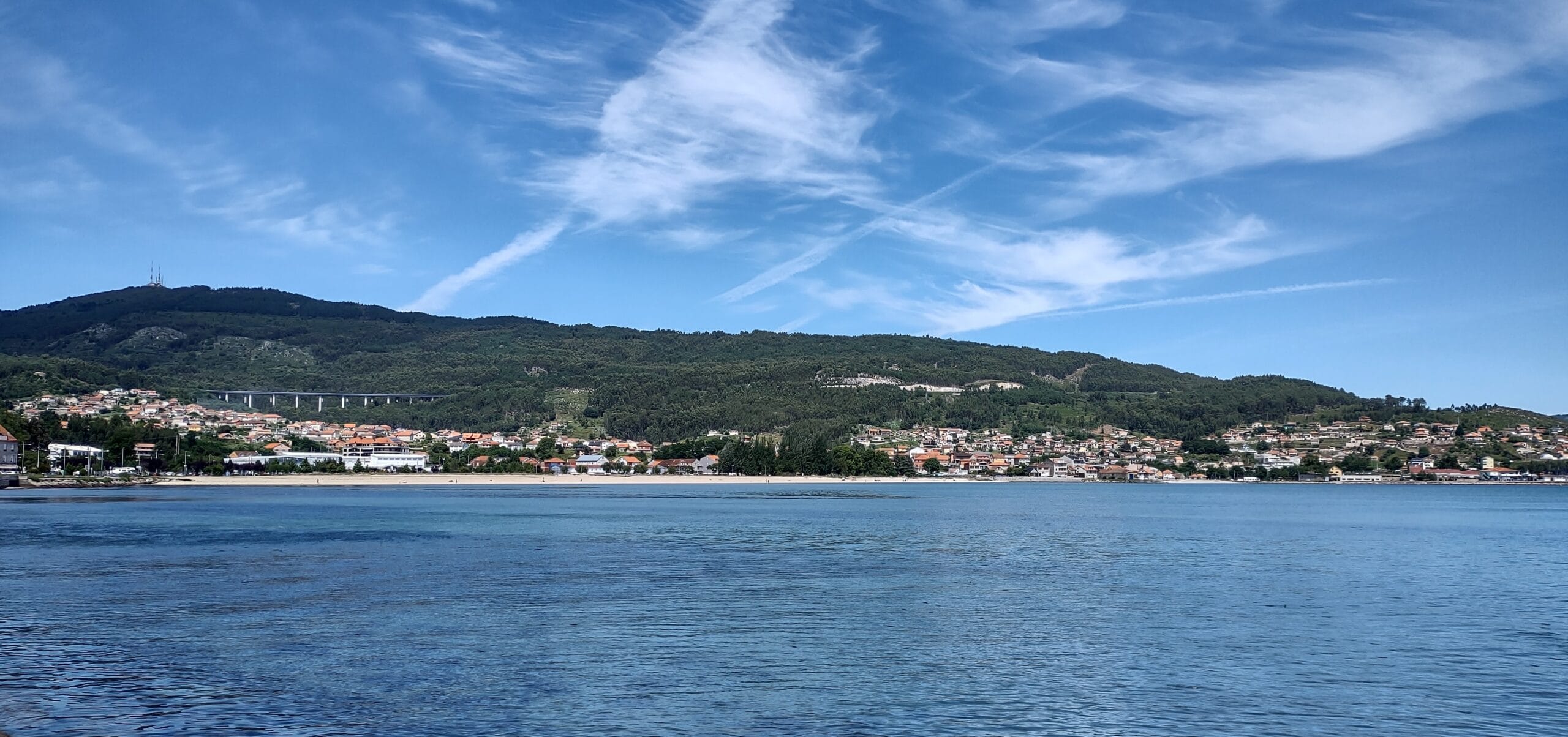
There are a few things a sailor fears, and one of them is hooking your anchor onto something stuck to the ocean floor. Imagine having no way to dislodge your anchor from an item on the seafloor 5 to 10 meters down or forgo your anchor to allow your boat to leave. There is no way to know if this will happen to you, as you generally do not have clear visibility down to your anchor this deep in the bay. And today, we are put to the test. We managed to bring our anchor up just below the water level before a big knock came from the windlass (the mechanism that brings your chain and anchor back on board) that could not pull the anchor any further. We see that we are tangled in some forgone fishing nets and a large rope attached to the sea floor. If you winch your anchor more at this point, you risk having the windlass break or losing your anchor altogether. Luckily our anchor did not snap off with all the pressure (courtesy of the extra high strength 8 tonne shackle we decided to fit in Poole UK), and we could cut her loose with some considerable effort.
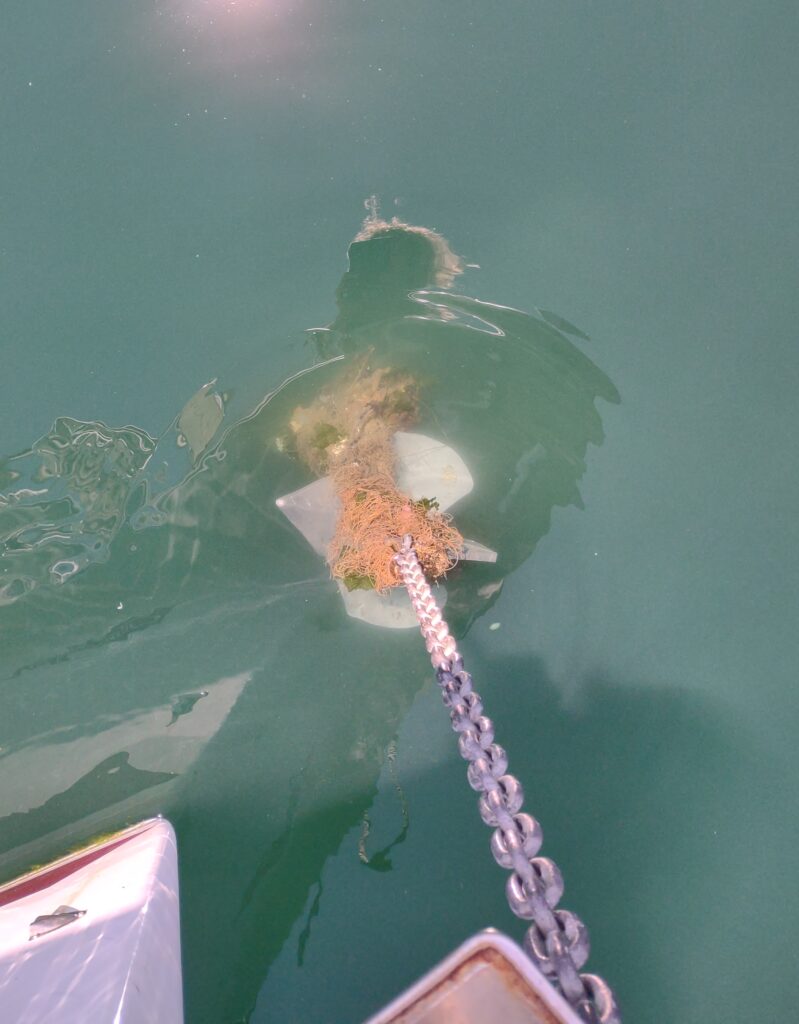
And then, just like that, we need to say goodbye to Djell, who has been with us for almost three weeks. Djell, by now, has become the fifth member of our family and a true friend, and it is sad to see him go. As we watch his ferry leave for Vigo, we think about his terrible jokes, infectious laughter…and smelly socks. Little do we know that it will take another two weeks for the smell of his Sauvage cologne to leave the boat. He enjoyed smelling suitable for Poseidon and the little mermaids day and night.
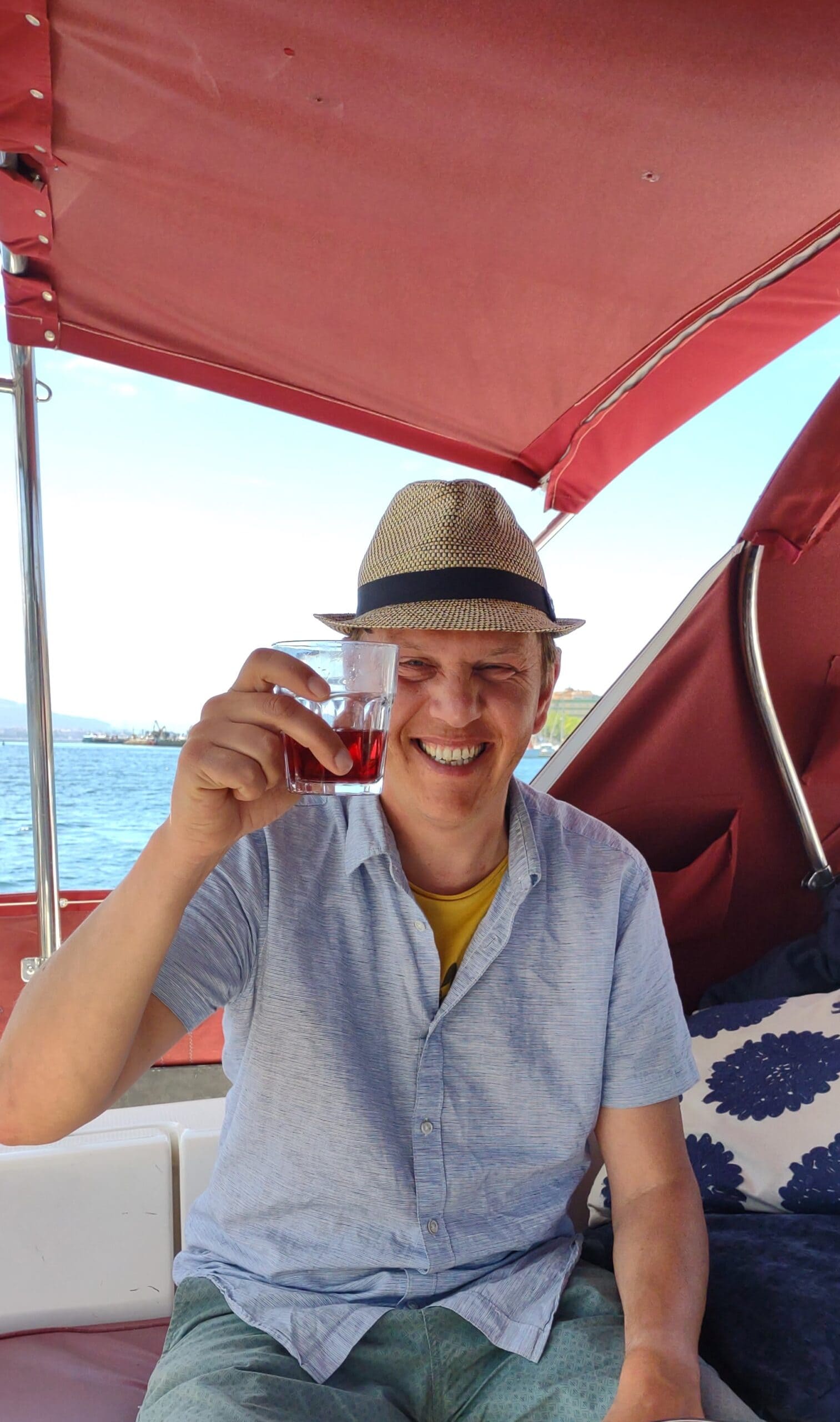
For the next two weeks, we are residents of Moaña anchorage. We spend our time with home-schooling during the mornings and some form of an outing from 6 pm to avoid the heat. These include swimming around our boat, going to the beach (the beach is close by, and by low tide, it seems that you can walk over to the boat from the beach), finding a new play park, or doing groceries…this becomes a fun activity too, as everything is in Spanish. On one of our excursions, we make our way to Vigo, across the bay, by ferry. The idea was to have a school outing for the children where they could learn about the Roman history surrounding the estuary. Instead, Sander and I were in awe of the views and the children enjoying themselves, playing in the gardens and drinking from the water fountains. Vigo is busy, with many of the high street shops we left behind in the UK. People are busy with their own concerns, and conversations are short. Though Vigo is beautiful, we looked forward to returning to our quite anchorage and new friends in Moaña.
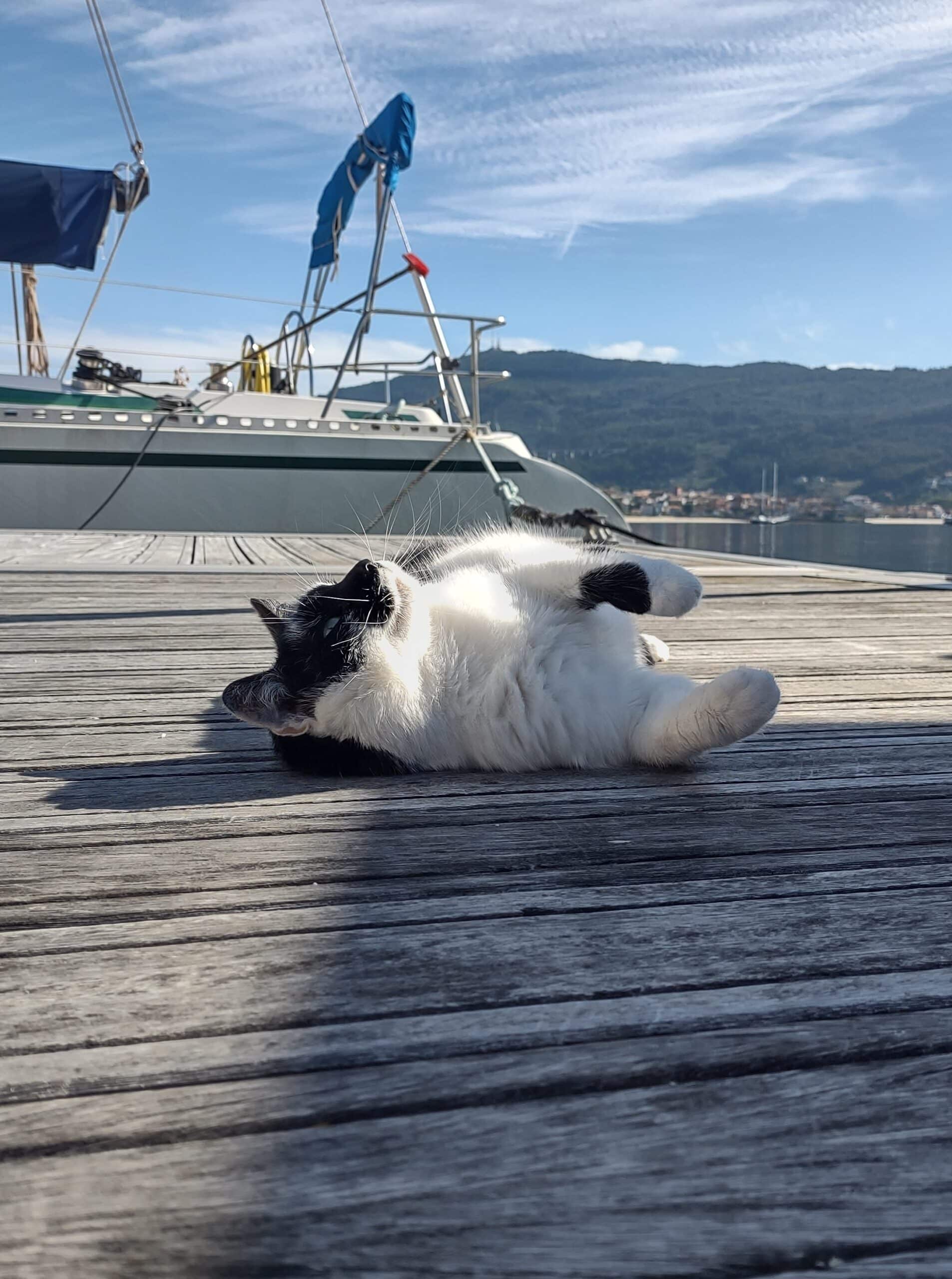
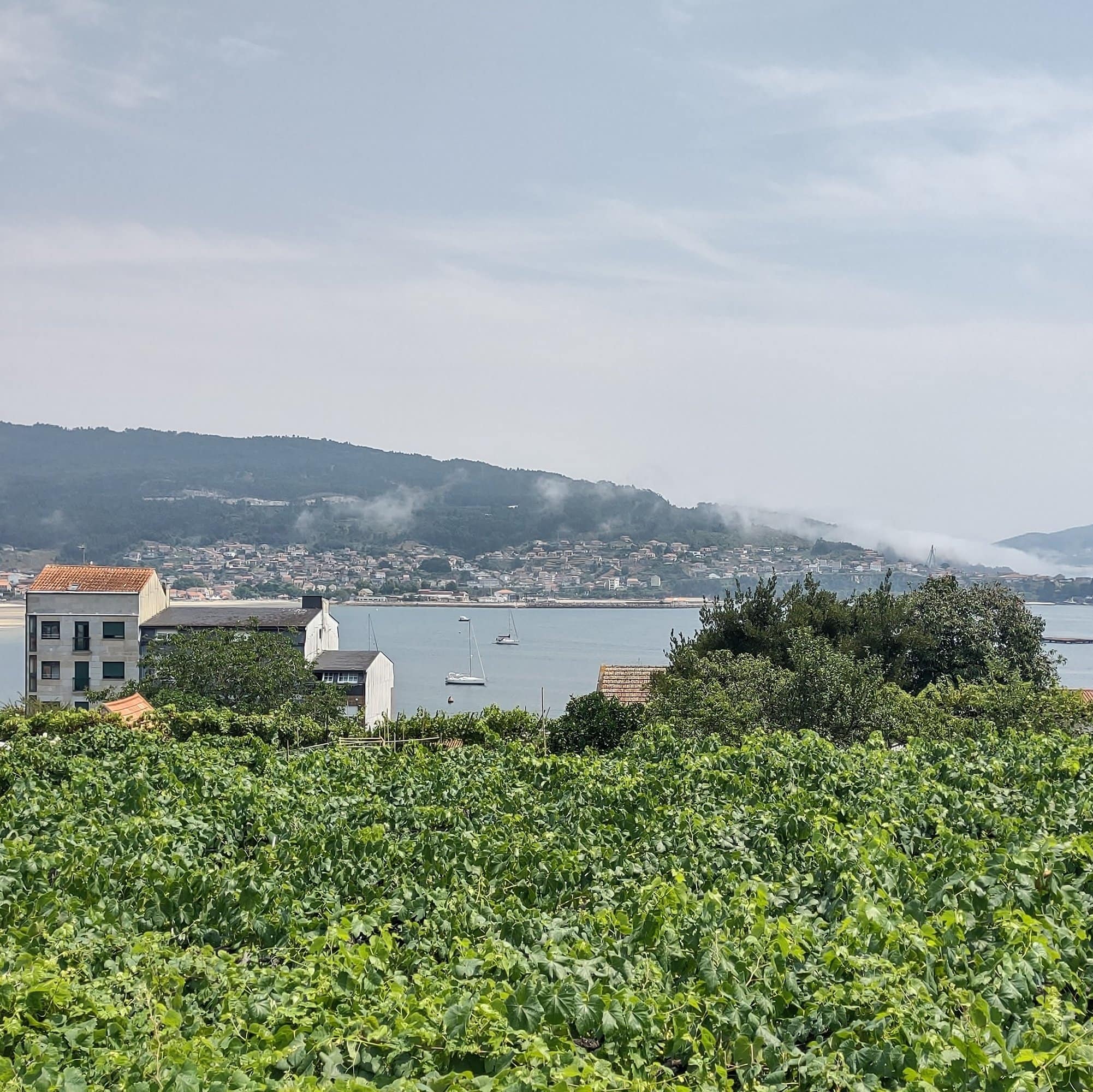
The water in the bay is not clean enough for us to use to make water, and for this reason, some of Sander’s daily tasks are water runs, where he fills jerrycans with water at the marina and brings them back to the boat. In addition to that, he needs to fill the dinghy tank with fuel, as we are using it a lot.
One strange day, there is a warm breeze in the air with a couple of boats anchored around us. We had had a braai that afternoon on the Susie Jane, and Sander was preparing to clean up things when the wind picked up to about 40 knots. Might I add, that this wind stayed warm, as if you were standing close to a fire. In the distance, we could see one of the boats dragging through the bay and heading for land. This can happen if the anchor has not lodged into the ground or the anchor turns and the wind picks up. At this moment, Sander launches the dinghy to see if he can stop the boat. The owners were not onboard. As Sander reaches the dragging boat, the owner comes onboard too, and together they manage to tie her down. By this point, she had beached herself, in a low tied, and it would be a waiting game to have her move out to deeper water again. With this happening, we decided to have a spare anchor in view on our deck, should someone have to jump aboard and stop Susie Jane from dragging. This was the first and last time we saw this anchorage filled with troubled water.
Close to our departure date, we enjoy Moaña’s celebration of Carmen. The festival is not taken lightly, and all the fishermen and locals participate in walking the Patron Saint of seafarers from the church to the dock, where she is carefully put onto a fishing boat and paraded around the bay. We watch the parade in town and head back to our boat at anchor. They sail Carmen from Moaña to Cangas, then across the bay to Vigo, and head back to Moaña. And suddenly, we have hundreds of boats and people descending on us. The fishing boat with Carmen is followed by every other fishing boat (large and small) from the bay. The sound of fireworks and laughter fills the air. It is a spectacular sight and an excellent closure to our time here. Moaña is genuinely exquisite and well worth visiting.
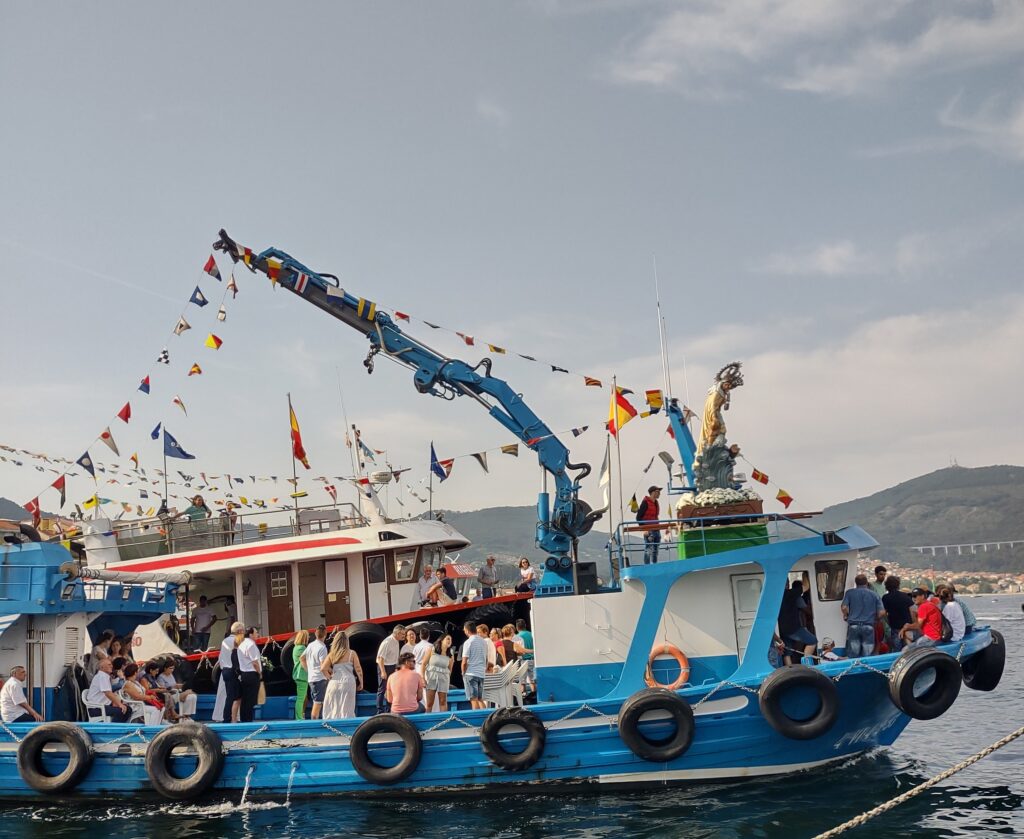
Now, we need to sail as a family again. There will not be an extra set of hands or a person to deflate sometimes heated moments. We say goodbye to Spain and enter the darkness of the night, waves rolling us about and heading to a new adventure in Portugal.
Lessons learned:
- Sharp knife
- A knife should always be ready to either cut a line stuck to your anchor or gut the fish you have just caught.
- Spare anchor
- Have a spare anchor in sight for if someone needs to stop your boat from dragging.
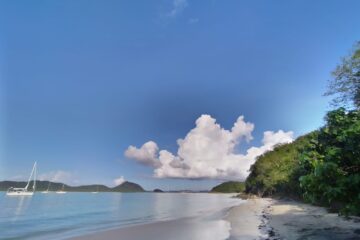
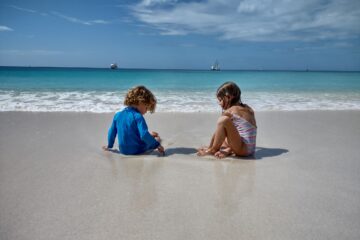
0 Comments